?What did the most famous dog breeds look like before and after 100 years of crossbreeding
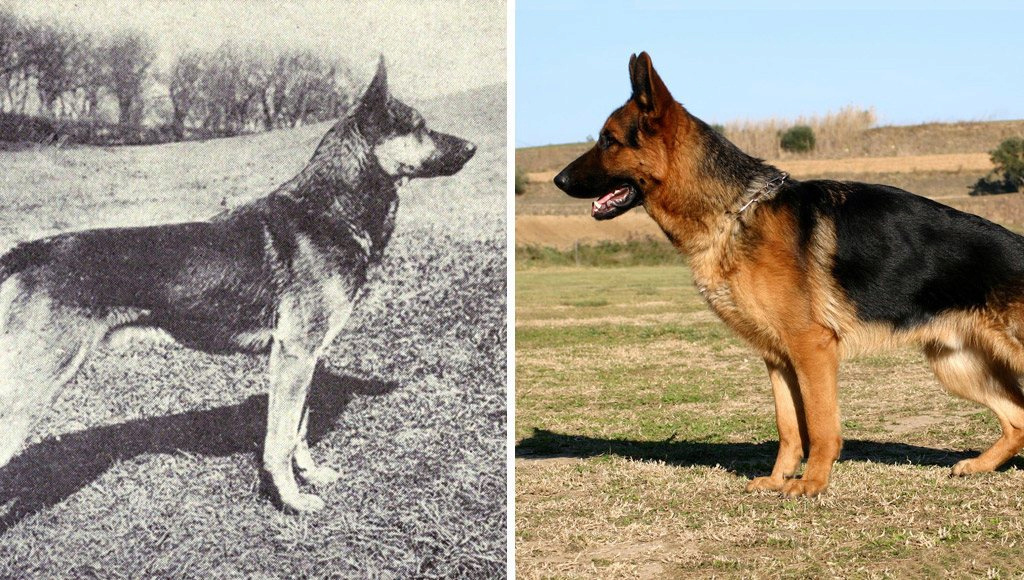
Dogs have been those furry, loyal friends of humans for centuries, but they didn't always look the same as they do today. Many popular species have changed over the past century, changes big enough for us to notice, thanks to Human intervention through artificial selection and hybridization.
By targeting specific characteristics such as size, fur color, and behavior pattern, and breeding animals with those characteristics, humans have created 167 different types of dogs, or groups of dogs, each with their own unique mental and physiological characteristics, and yet they all belong For one sex, which is the sex of dogs.
In this article, we have collected for you a list of many famous types of dogs and compared how they looked in a 1915 book titled “Dogs of All Nations” written by Walter Splin Manson, and how those same types look today.
Here are some of these types:
1. The Bull Terrier at the time:

Bull Terrier dog in 1915
The Bull Terrier was recognized for the first time as a single type of dog by the American Kennel Club - for short, the AKC - in the year 1885, and it seems that this dog was a good-looking athlete, with a streamlined head shape and a slim chest. The book Dogs of All Nations describes him as “the true embodiment of agility, elegance, and determination,” as well as “the gladiator of the canine race.”
The dog (Bull Terrier) now:

The bull terrier now.
But today, the shape of the (Bull Terrier) dogs has changed to become the shape of its head in the shape of an American football, with a short and thick body, which is considered a great departure from the characteristics that were characterized by this type in the past, as it was considered an elegant and skinny dog in the year 1915 .
The American Dog Breeders Club reports: “Now, the face of this type of dog must be round and full, which gives the impression of being full-bodied as well, with the front of a face devoid of terrain or cavities, that is, in the shape of an egg.” According to the Science Of Canine program Dogs, which is shown on the National Geographic channel, this type of dog also developed extra teeth, and a strange habit of chasing its own tail.
2. The English Bulldog at the time:

The English Bulldog in 1915
This English bulldog was one of the most physiologically modified dogs due to artificial selection.
In the United Kingdom, these dogs were used in what was called “fighting bulls,” a bloody sport in which dogs attack and bite tied bulls, until it became illegal in the year 1835, and in the year 1915, the English bulldog had some characteristics that we see Today, like his flabby cheeks and short, plump body shape.
The bulldog now:

English bulldog now.
Today, breeders and crossbreds have bred bulldogs to have deeper wrinkles on the face, in addition to a shorter and thicker body.
The American Kennel Club describes the ideal dog (Bulldog) as having: “a short, strong and heavy body, a large head with a short face, broad shoulders and sturdy limbs.” Unfortunately, English bulldogs suffer from a number of health problems such as breathing problems and high blood pressure. Excessive body heat.
3. German Shepherd Dog Germain Shepherd at the time:
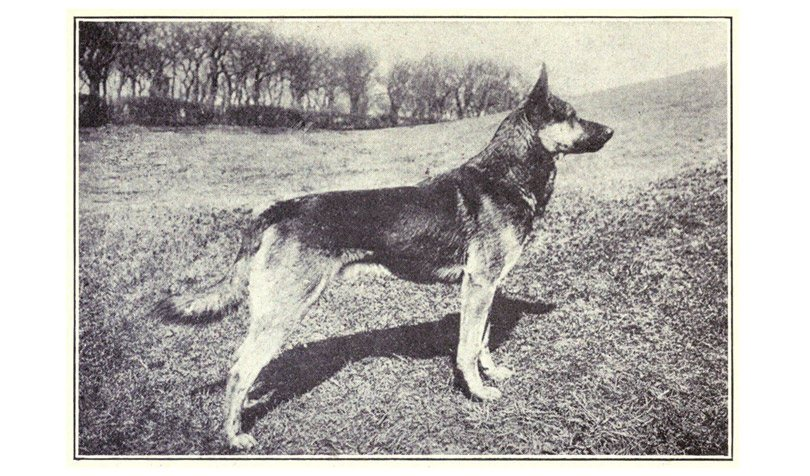
German Shepherd Dog Germain Shepherd in 1915
German shepherd dogs have become symbols of loyalty and companionship - and police brutality as well, unfortunately -, and the American Kennel Club classified them as a special type of dog in the year 1908, and in the year 1915 the book “Dogs of All Nations” described them as: “dogs of medium size, She weighs only 25 kilograms, with a prominent chest, and a straight and solid back.”
German Shepherds Now:
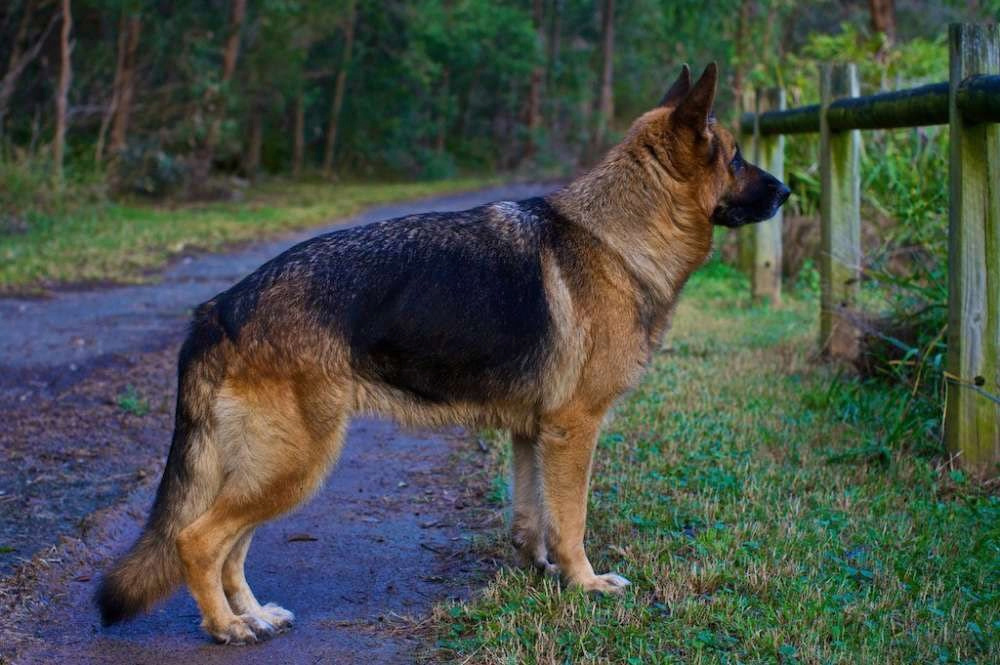
But today, German Shepherd dogs have bred to become larger, with a weight ranging from 35 to 45 kilograms, with a more curved back towards the back, and the American Dog Breeders Club describes the superior sex as: “strong, agile, muscular, alert and full of vitality.” and activity.”
However, this type of dog is also exposed to many diseases, including deformities of the hip joint, where the bones of the legs are not positioned well inside the hip cavity, and these dogs also suffer from a disease known as bloat, in which their stomach swells and expands due to air and then twists, a condition that Sometimes lead to her death.
4. The Airedale Terrier at the time:
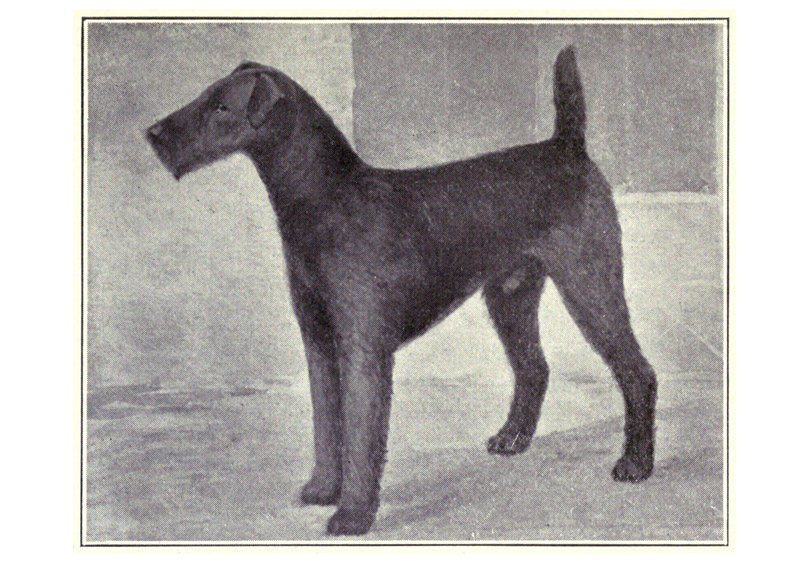
The Airedale Terrier in 1915
Although the picture above is not clear and cannot be confirmed, the book Dogs of All Nations described the head and ears of the (Iridile) as having a dark reddish-brown color, which is the color that extends along its legs, thighs and elbows, and its fur was The dog was stiff and stringy, but not long enough to be disheveled or wrinkled.
The dog (Iridile Terrier) now:

Today, the coloration of this species does not seem to have changed much, but its modern fur has inevitably changed to become longer and more curly than it was in 1915, and the reason that led breeders to evaluate this characteristic now remains unclear.
The (Iridile) dogs are the largest types of (Terrier) dogs, and they are characterized by being athletic and playful.
5. The Shetland Sheepdog at the time:
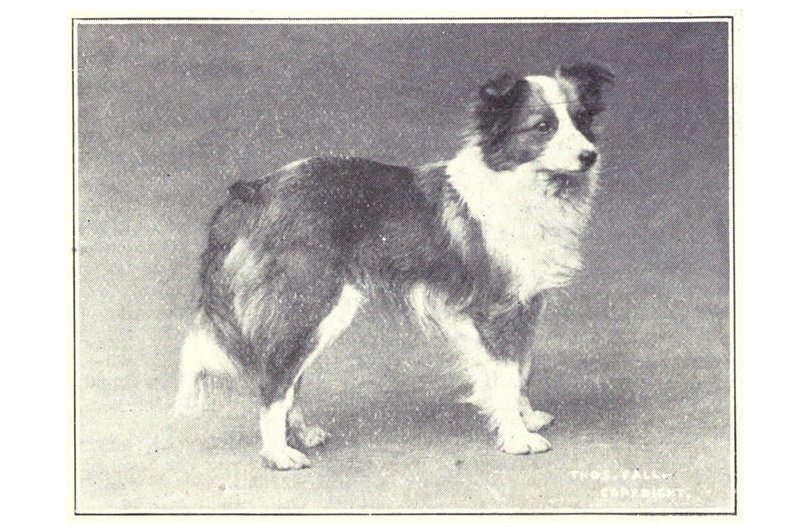
The Shetland Sheepdog in 1915
The American Kennel Club did not recognize the (Shetland Sheepdog) as a special and unique type of dog until 1911, that is, four years before this picture was taken and placed in the book “Dogs of All Nations”, and at those times, the book stated that the weight of this The dog was only between four and eight kilograms, and seemed to have a coat of medium length.
The Shetland Sheepdog now:

Today, these dogs have bred to have a larger body that weighs at least 12 kilograms, although it is still considered small in size, and its fur is significantly longer than it was in 1915.
The American Kennel Club now describes them as: “small, alert, furry, active worker” and very intelligent and good at herding flocks of sheep or similar.
Source: websites

